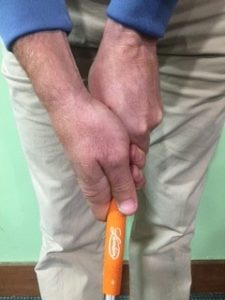A Grip on your Golf
During this article I will reference the grip from a right handed golfer’s perspective, so the top hand will be left and the bottom or trail hand will be the right.
When I first took up golf I seem to remember all the golf technique books I read talked about the right and the wrong grip and even when I did my PGA coaching exams all those years ago the grip was fairly specific in its structure. In recent times I have seen the golf grip described as simply what we do to control the clubface.
The modern game has a number of examples of good players with grips that would have been considered wrong or very poor, and yet they have still succeeded in finding a way to hit the ball well enough to compete a good level. All golfers have swings that in simple terms are a series of compensations or responses from out set up position. One of those influences is very much how we hold the club, but for me I think it can have much more of an effect than just controlling the clubface.
Having the chance to create the most effective kinetic chain (joints and segments have an effect on one another during movement) is going to be influenced by our posture. Our posture in turn can be manipulated by our grip position. For example – if our top hand is turned over in an exaggerated clockwise direction known as a strong left hand position this can lead to the left shoulder being elevated (hunched up). Shoulder blade (scapula) has lost control and rotation is going to be compromised for some golfers. I would be very keen to point out that I am not suggesting that all golfers with strong grips will do this however it is something we find often and is a good example of how a grip position can effect more than just hands. Another area the grip can impact on the swing is in “leverage” of wrist action, this can inhibit the golfer’s ability to maximize clubhead speed.
Here are a few points to look for in a grip.
Left hand or top hand – you have a muscle bulge on the heel of the hand (this is called the hypothenar eminence).
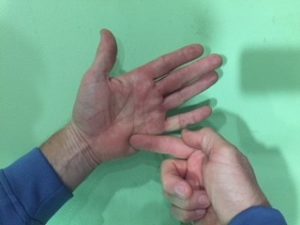
Place the club underneath this area, one of the biggest problems comes from people placing the club across this area. This will compromise the cocking motion of the club during the swing. Now rest the club on the second fleshy section of the index finger. Your thumb will rest with no real pressure on top of the grip. When you wrap the rest of your fingers around the club it should feel like you have the control of your club through the last 3 fingers of your left hand.
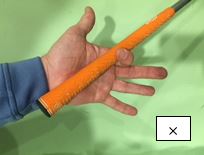
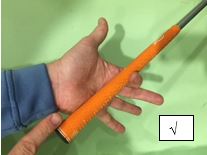
Right hand or trail hand – ideally you want to connect the two hands with an overlap or interlock of the little finger of your right hand and the index finger of your left. Place the club predominantly onto the two middle fingers middle fleshy sections. Fold your right palm over the top of your left thumb so that the left thumb fits snugly into the pocket formed by the lifeline of your right palm.
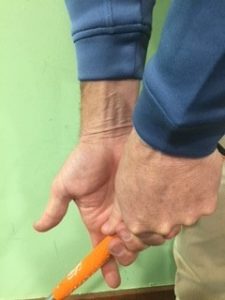
As you look down at your grip your left thumb should be hidden completely. Another indicator I like to see is 3 knuckles of the left hand been visible but ideally not the 4th. Grip pressure is going to be important in allowing the energy in your swing to be transferred through your hands and created by your hands, therefore shoulders and arms need to be relaxed in terms of muscle tension. I remember Alex Hay the golf commentator suggested that Seve Ballesteros had a wonderful ability to grip the grip so lightly to begin with and during his swing only excerpt enough pressure to just keep hold of it. One of the major problems in changing a grip even a small amount is the tension is going to increase to start with. As we a lot of the sensory feedback is coming through the hands it generally will me you need to have some patience in practice. Also if you have been playing for a while with a different grip your swing will no doubt have developed the compensations or manipulations that will need a bit of re-training. However it is this re-training that leads to the efficient process that can be got from sound fundamentals.
